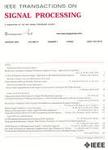版权所有:内蒙古大学图书馆 技术提供:维普资讯• 智图
内蒙古自治区呼和浩特市赛罕区大学西街235号 邮编: 010021

作者机构:Univ So Calif Dept Elect Engn Los Angeles CA 90089 USA Univ Calif Irvine Donald Bren Sch Informat & Comp Sci Dept Comp Sci Irvine CA 92697 USA
出 版 物:《IEEE TRANSACTIONS ON SIGNAL PROCESSING》 (IEEE Trans Signal Process)
年 卷 期:2014年第62卷第23期
页 面:6209-6224页
核心收录:
基 金:ONR [N00014-09-1-0700] NSF [CNS-0832186, CCF-0917343, CCF-1117896, CNS-1213128] AFOSR [FA9550-12-1-0215] DOT [CA-26-7084-00] USC WiSE USC Zumberge National Center on Minority Health and Health Disparities (NCMHD) [P60 MD002254] Nokia Qualcomm
主 题:Active classification controlled sensing active state tracking partially observable Markov decision processes (POMDP) nonlinear POMDPs Kalman-like filter Kalman-like smoothers innovations approach approximate MMSE estimation stochastic dynamic programming discrete state Markov chains Martingale difference sequence body sensing network application
摘 要:The problem of state tracking with active observation control is considered for a system modeled by a discrete-time, finite-state Markov chain observed through conditionally Gaussian measurement vectors. The measurement model statistics are shaped by the underlying state and an exogenous control input, which influence the observations quality. Exploiting an innovations approach, an approximate minimum mean-squared error (MMSE) filter is derived to estimate the Markov chain system state. To optimize the control strategy, the associated mean-squared error is used as an optimization criterion in a partially observable Markov decision process formulation. A stochastic dynamic programming algorithm is proposed to solve for the optimal solution. To enhance the quality of system state estimates, approximate MMSE smoothing estimators are also derived. Finally, the performance of the proposed framework is illustrated on the problem of physical activity detection in wireless body sensing networks. The power of the proposed framework lies within its ability to accommodate a broad spectrum of active classification applications, including sensor management for object classification and tracking, estimation of sparse signals, and radar scheduling.